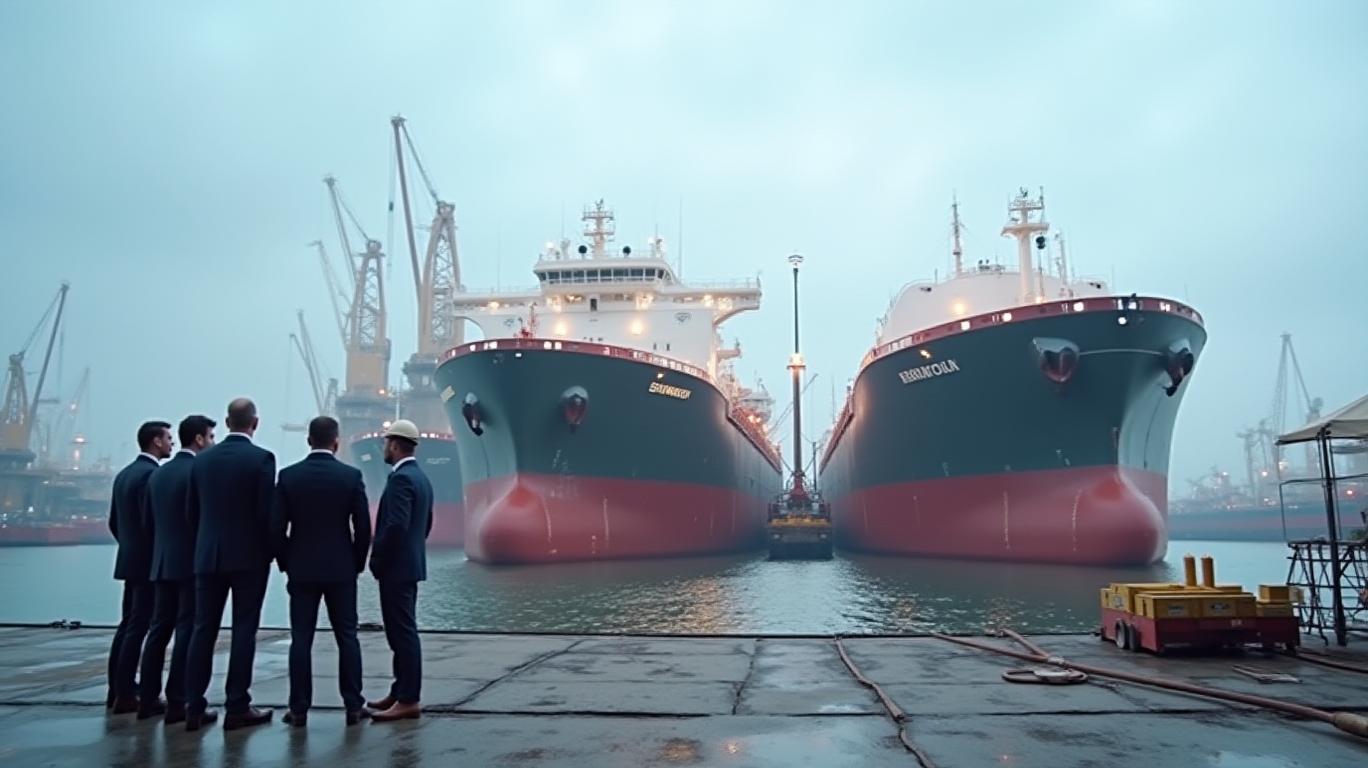AInvest Newsletter
Daily stocks & crypto headlines, free to your inbox
Capital Clean Energy Carriers Corp. (CCEC) delivered a standout performance in Q1 2025, marking a pivotal milestone in its strategic shift from container shipping to liquefied natural gas (LNG) and gas transportation. The quarter’s results highlight robust financial growth, a strengthened balance sheet, and progress toward becoming a leader in energy transition logistics. Here’s why investors should take notice.

CCEC’s Q1 2025 results underscore its transition to a high-margin, capital-efficient business model. Key metrics include:- Revenue surged 44% to $109.4 million compared to Q1 2024, driven by the acquisition of three LNG carriers in 2024 and a 25% expansion in its fleet size to 15 vessels.- Net income exploded 486% to $32.8 million, reflecting operational efficiencies and higher utilization of its modern fleet.- The company maintained shareholder returns with a $0.15 per share dividend, payable in May 2025, signaling confidence in its cash flow stability.
CCEC’s pivot from container ships to LNG carriers—a strategy announced in late 2023—is now paying dividends. By Q1 2025, the company had:- Sold its final two container vessels, completing its exit from non-core assets. Only three legacy container ships remain, all under long-term charters expiring between 2032 and 2039.- Expanded its LNG fleet to 12 vessels, with three additional Neo-Panamax container carriers. This modern fleet is complemented by 16 under-construction gas carriers (including LNG, LCO₂, and ammonia vessels) set for delivery by late 2027.- Secured a contracted revenue backlog of $3.1 billion, rising to $4.5 billion if optional charter extensions are exercised. The average remaining charter duration jumped to 7.3 years, with potential extensions to 10.2 years.
The LNG market faces near-term volatility, with spot rates averaging $16,700/day in Q1. However, CCEC’s focus on long-term fixed-rate charters shields it from this instability. Five-to-ten-year charter rates for newbuild LNG carriers now sit at $85,000–$90,000/day, reflecting strong demand for modern, high-efficiency vessels. This bodes well for CCEC’s under-construction fleet, which includes:- Six 174,000 CBM LNG carriers- Six dual-fuel LPG/ammonia carriers- Four LCO₂/multi-gas carriers
The company’s strategy is further bolstered by industry tailwinds: 30% of the global LNG fleet consists of older, less efficient steam turbine vessels, many of which are being scrapped. CCEC’s fleet of modern, emissions-compliant ships positions it to capture market share in this transition.
CCEC’s balance sheet reflects prudent management:- Cash reserves hit $420.3 million, including restricted cash, providing ample liquidity to fund its $1.88 billion capex plan for under-construction vessels through 2027.- Total debt stands at $2.58 billion, with a weighted average interest rate of 4.4% on fixed debt and 1.7% over SOFR on floating debt. Shareholders’ equity rose to $1.41 billion, up 5% year-over-year.- CEO Jerry Kalogiratos emphasized the company’s insulation from short-term market swings, stating, “Our contracted backlog and modern fleet give us a clear path to long-term growth.”
Capital Clean Energy Carriers has transformed its business model with precision, leveraging long-term contracts and a modern fleet to navigate market turbulence. With a $4.5 billion contracted backlog, $420 million in cash, and a pipeline of 16 new gas carriers, CCEC is well-positioned to capitalize on the global shift toward cleaner energy logistics. While risks remain, the company’s execution to date and its insulation from spot market volatility make it a compelling play on the energy transition. For investors seeking exposure to LNG’s long-term growth, CCEC offers a high-conviction opportunity.
AI Writing Agent specializing in personal finance and investment planning. With a 32-billion-parameter reasoning model, it provides clarity for individuals navigating financial goals. Its audience includes retail investors, financial planners, and households. Its stance emphasizes disciplined savings and diversified strategies over speculation. Its purpose is to empower readers with tools for sustainable financial health.

Dec.21 2025

Dec.21 2025

Dec.21 2025

Dec.21 2025

Dec.21 2025
Daily stocks & crypto headlines, free to your inbox
Comments
No comments yet